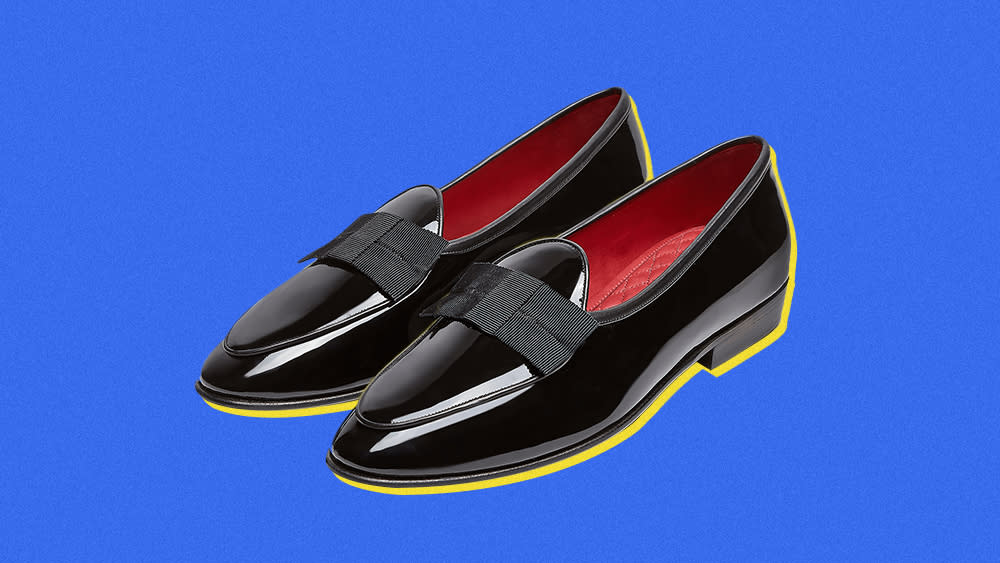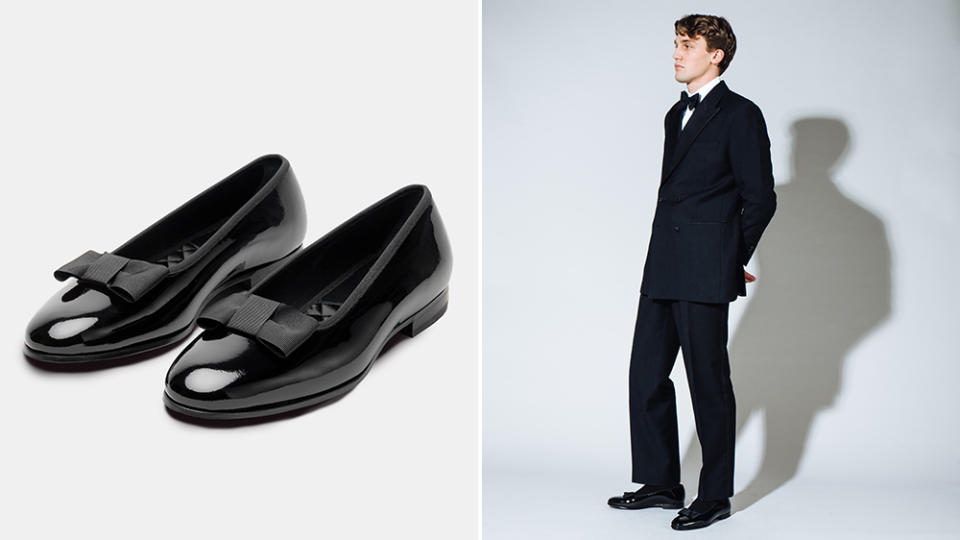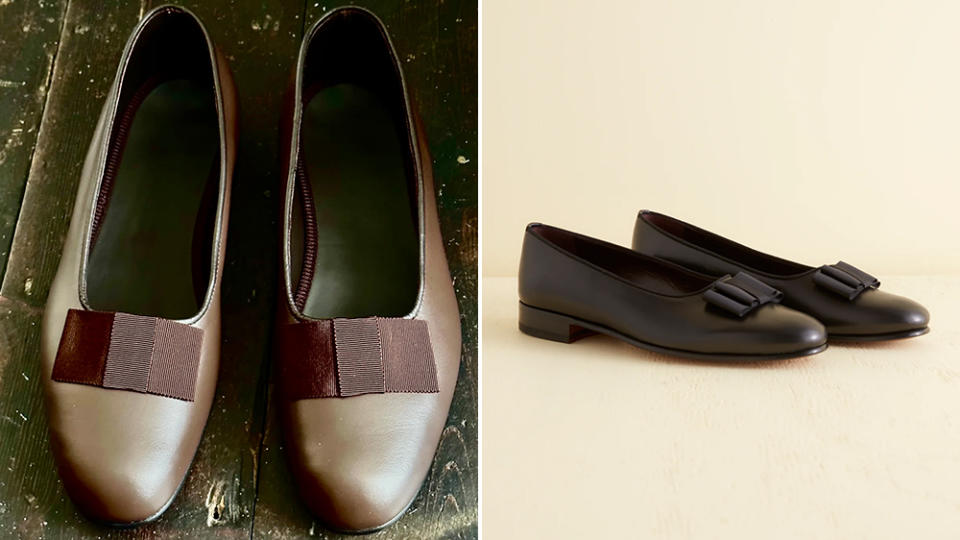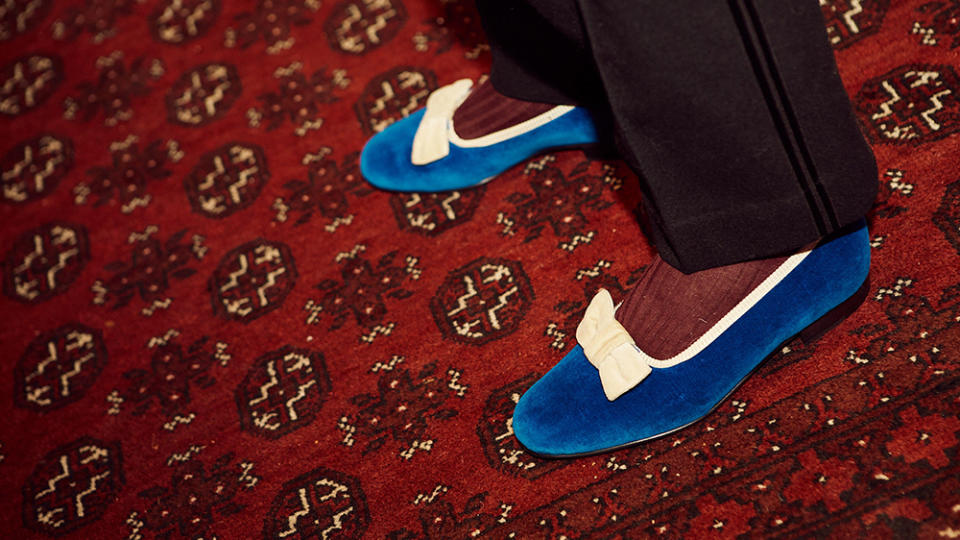How the Old-School Opera Pump Became a Modern Black-Tie Essential

Even among those familiar with the style, the opera pump has long been considered an anachronism. A rather delicate-looking patent leather slipper marked by a grosgrain bow, it appears to be a curious cast-off from an earlier era of men’s dress, seemingly as relevant to today’s man as a silk top hat or a pair of spats.
And yet: the supposed fossil is popping up in the collections of buzzy young designers (see: Bode), and has become a staple offering of recently founded footwear labels including Morjas and Baudoin & Lange. What’s more, traditional makers including Bowhill & Elliott have begun to push the envelope with opera pumps in black suede—or even a red-and-black giraffe print cow hair.
More from Robb Report

As to what’s behind this unlikeliest of apparent comebacks, Baudoin & Lange co-founder Allan Baudoin has a theory. “As recent trends, driven by the youth on social media platforms, reintroduce older styles into the fashion scene, the fusion of ‘old money’ styles serve to introduce more traditional styles to younger ones,” he tells Robb Report.
Alternatively, Morjas founder Henrik Berg sees the embrace of the admittedly dainty shoe as in keeping with the current footwear zeitgeist. “It weathers fashion trends, such as chunky silhouettes, and remains true and pertinent in a cyclical world. Now, it’s more relevant than ever as we see the return of finer shoes with more elegant and delicate silhouettes.”
Tony Sylvester, owner of idiosyncratic English clothing and accessories brand AWMS, considers the opera pump “arguably the oldest designed shoe that we still wear today.” He traces its ancestry back to the court shoe, a formal slipper with a silver buckle that was worn during the Regency era. At some point—possibly under the direction of O.G. dandy Beau Brummell—its buckle was traded out for the simpler bow, and the opera pump as we would recognize it today was born.

While its design has remained relatively static for decades, the way that it is worn has not. Sylvester is an advocate for wearing the shoe outside of its original black-tie setting, a cause he’s furthered by designing opera pumps made from matte calfskin leather rather than gleaming patent.
“To the modern eye, the opera pump is somehow both simple and elegant, yet flamboyant and eccentric, especially when taken out of the context of formal wear,” Sylvester tells Robb Report. “This is footwear that straddles one’s wardrobe, avoiding the workaday and practical middle, embracing both the very formal and the very casual elements perfectly.”
Sylvester is hardly alone in a preference for materials beyond patent leather. Baudoin & Lange constructs its Sagan Classic Opera Bow from black velvet, while Bode’s are built from Napa leather. Even those that continue to employ black patent have found subtle ways to modernize: Morjas’s model, while utterly traditional in appearance and make, benefits from a more contemporary last shape that allows for a roomier fit.

Those looking to get a little weird can rely on Bowhill & Elliot’s made-to-order program, which allows clients to specify their choice of uppers, lining, and bow, yielding such custom creations as a royal blue velvet opera pump accented with ivory. AWMS, meanwhile, also offers an opera pump made from wool tartan, and has worked directly with clients on one-of-one creations that repurpose vintage silk ties or even a 150-year-old Japanese boro fabric.
But as rarified as its materials can get, remember this: tickets to Madama Butterfly are in no way required to enjoy that most surprisingly versatile of styles.
“There is very little that looks equally at home with black tie and an old beaten-up pair of 501s, but I would nominate the opera pump as a contender,” Sylvester says.
Best of Robb Report
Sign up for Robb Report's Newsletter. For the latest news, follow us on Facebook, Twitter, and Instagram.

